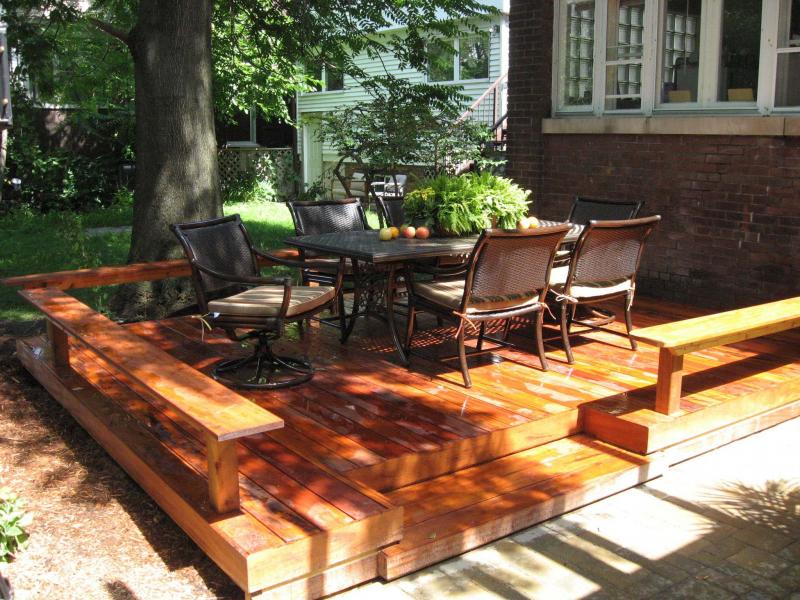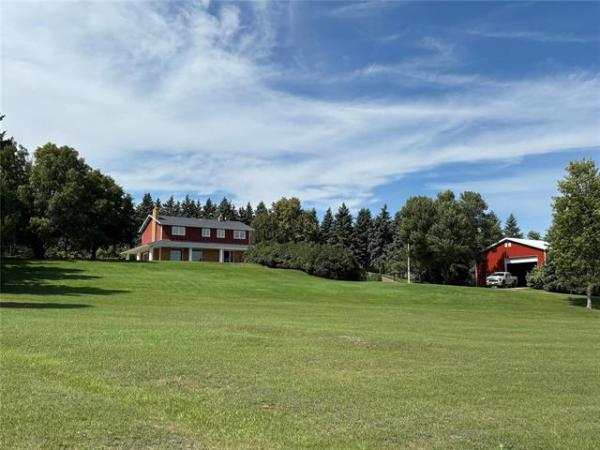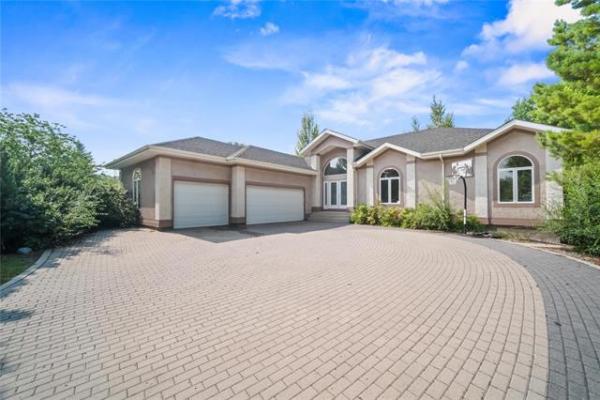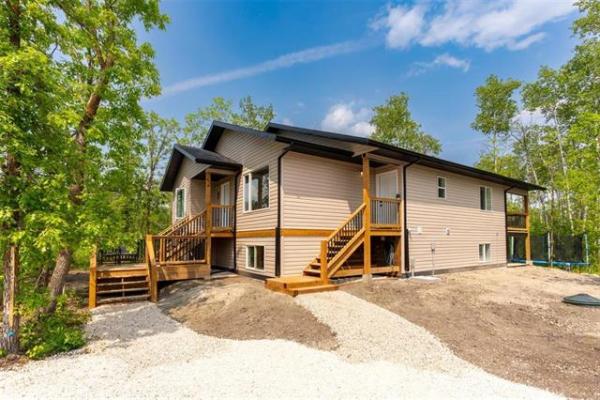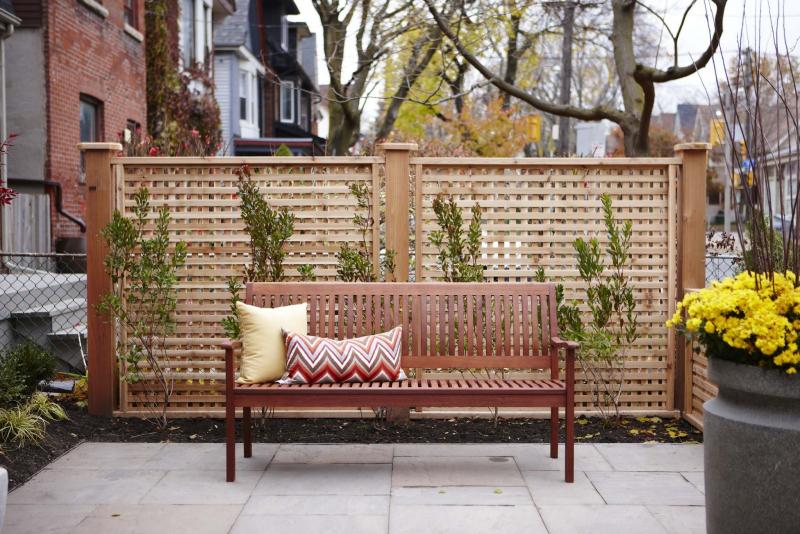
Carson Arthur
The addition of a seating area to this front yard is enhanced by a cedar privacy panel. Given the yard's small size, it's a better option than the lawn it replaced.
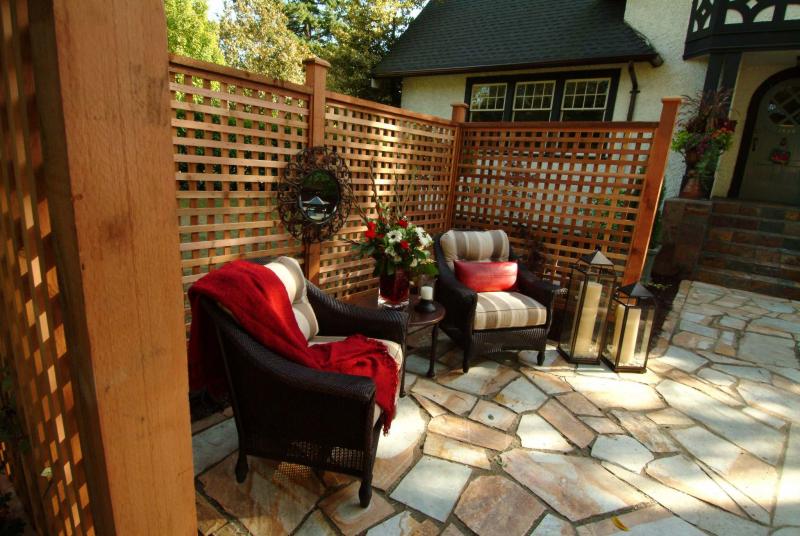
Carson Arthur
A front-yard courtyard transitions an under-utilized area to an appealing outdoor space and adds curb value to the property.
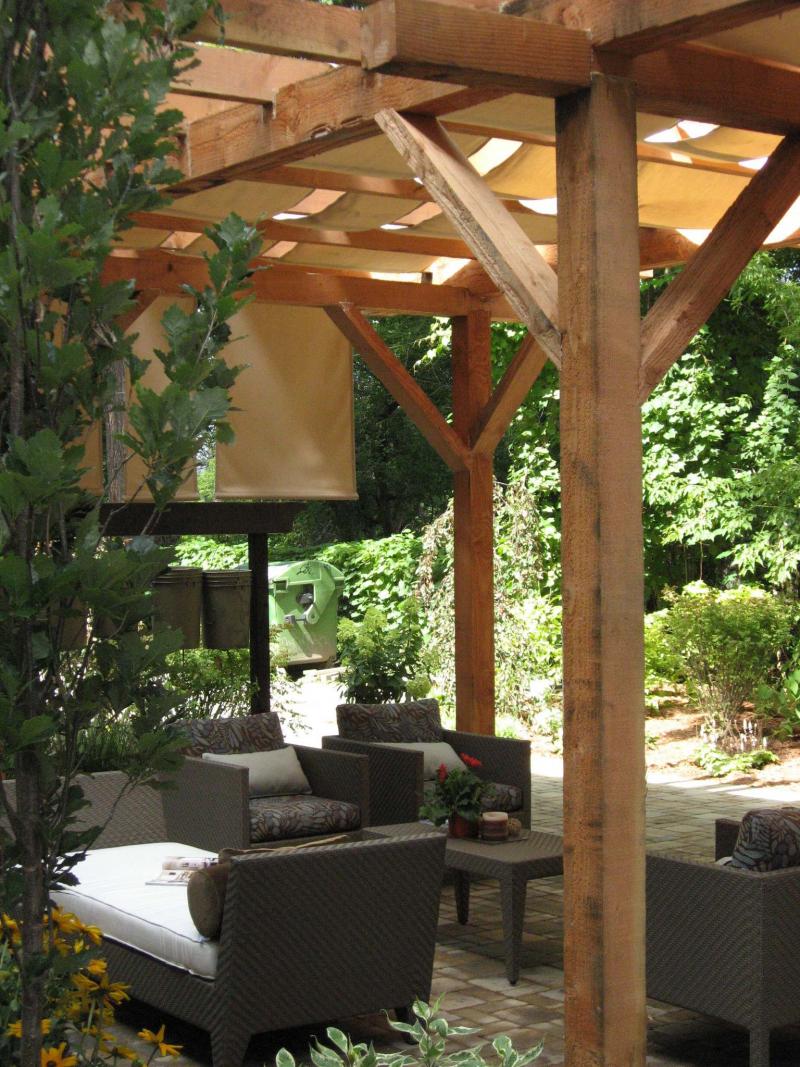
Carson Arthur
This cedar pergola with weather-resistant fabric panels provides a sense of enclosure and privacy to this conversation area.
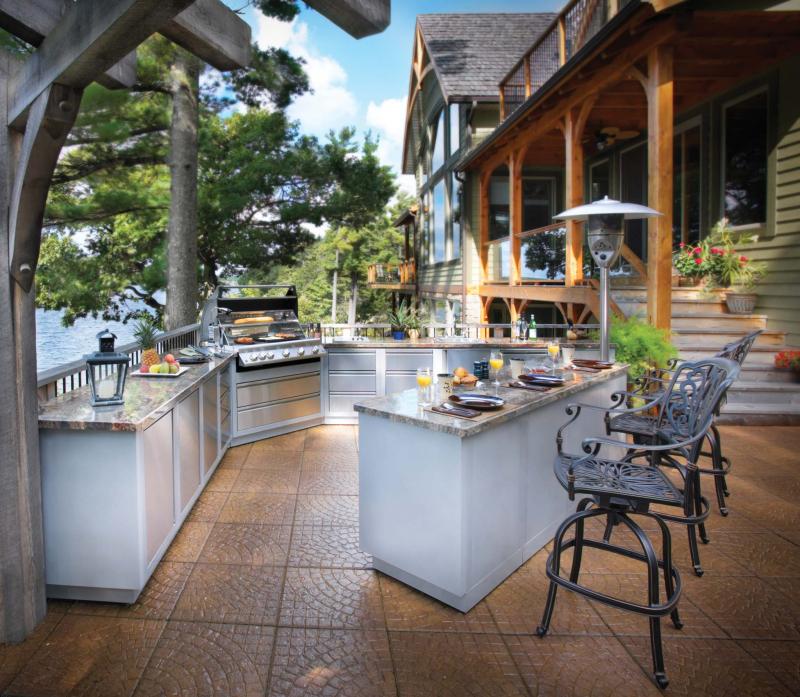
Napoleon
An upscale outdoor kitchen is a great option for homeowners whose houses lack an eat-in kitchen.
In our mind’s eye, we visualize the components of our landscape — patio areas, pathways, beds and borders — even though all traces of these are now buried beneath a surplus of snow. Like pieces of furniture, we imagine moving things around, adding and subtracting for the best possible effect when summer arrives. Winter is an ideal time to dream about the possibilities for your landscape, researching materials and consulting experts.
Fortunately, it’s the start of the season for renovation, landscaping and lifestyle shows.
Guaranteed to fuel more inspiration than the average homeowner can afford, outdoor embellishments and accessories, from pools to pergolas, and outdoor decking materials are showcased at the events. They also include tips and advice from well-known speakers and celebrities.
Prior to his appearance at Winnipeg’s Home and Garden Show from April 6 to 9, Carson Arthur — landscape designer and host of HGTV Canada’s new series, Home to Win — will be presenting at home shows across Western Canada beginning with the BC Home + Garden Show in February.
"There are three different types of homeowners — baby boomers, generation Xers and millennials — in the marketplace," Arthur says in a recent phone interview.
"Baby boomers are downsizing and interested in customizing their new, smaller outdoor spaces so they can continue to do what they enjoy doing, but with less physical effort. They know how much they want to spend and what they need to achieve."
"Generation X," Arthur says, "is focused on their home’s value and adding improvements that increase the value of their home. This demographic is also inclined to reward their hard efforts in the workplace with the type of landscape they feel they deserve, regardless of the expense which they are confident they’ll figure out."
Arthur adds, however, that gen-Xers typically prefer to complete a renovation project at one time rather than drag it all out with a piecemeal approach.
Millennials, on the other hand, are very focused on the experience. Purchasing a home for the first time, mostly small starter houses, this is the demographic that gravitates toward the urban farming movement, Arthur says.
The environment, backyard beekeeping, raising chickens, growing heirloom vegetables — these are the types of things that impact millennials’ decisions for their outdoor spaces.
"It’s also about the process of how it happens," Arthur says. "With less money to work with, millennials are resourceful and learn how to reuse and repurpose materials to get the backyard space that suits their family’s needs."
Whatever our approach to landscape renovations and improvements, we want our investments to meet our personal needs and improve our home’s value.
By now, many are familiar with the concept of the outdoor garden room as an extension of the home.
In order to take it to the next level, Arthur says it is important to achieve harmony between your indoor and outdoor spaces.
As you transition from the inside to the outside, try to avoid a drastic change in colour, such as jumping from soft, muted shades indoors to a colour palette of noisy, opposing tones outdoors.
"You want consistency throughout because it makes a statement about who you are as the homeowner," Arthur says.
Curious, I asked Arthur about his first question for homeowners when he’s asked to design their backyard space. He says it’s helpful to know what homeowners feel is lacking in their interior space. Often, for example, there are features that can be incorporated into the outdoors, such as a fireplace or a roomy dining space, because these elements are not already repeated indoors. If a home lacks an eat-in kitchen, for example, a homeowner may want to invest in an upscale outdoor kitchen complete with modular units that can be configured to suit a particular space.
Storage, accessories, type of grill, an all-weather counter top and convenient access are important considerations. An outdoor fridge may be desired, as well. Prices range from $2000 for a smaller island to as much as $15,000 to $20,000.
In addition to knowing how much you are willing to spend on any project, an important goal, Arthur says, is to define or build a space for a specific purpose. In one example, Arthur created two distinct areas — one for dining and another for conversation — for clients whose backyard was separated down the middle by a walkway that led to their garage and parking pad.
On one side of the walkway, a deck for outdoor dining was situated in close proximity to the house. On the opposite side of the pathway, Arthur installed a patio area with a cedar pergola to create a living room effect. The homeowners entertain their guests on the deck and then move to the conversation area for the rest of the evening.
Since windows from a neighbouring building looked directly into the homeowners’ backyard, the pergola was built to a height of 3.3 metres. To further enhance privacy, Arthur wove three fabric panels through the rafters. Resistant to fading, moisture and staining, the panels drape over the edge of the rafters for a soft, billowing effect.
A sense of enclosure, particularly in today’s small urban spaces, is important, Arthur says.
How can you differentiate your front landscape from your neighbours’? Your options go beyond an expanse of lawn and a couple of flowerbeds. What homeowners are really looking for, Arthur says, is diversity so they can create their own unique curb appeal.
"Creating a welcoming space when neighbouring houses are similar in appearance is a challenge and yet we know that curb appeal is at least eight per cent of your home’s value," Arthur says.
In one project for Cityline, a Canadian lifestyle television program, Arthur incorporated a series of freestanding cedar privacy panels in various heights — as well as a seating area — into a postage-stamp sized front yard.
"Panels and benches draw everything together for a cohesive design as you move into the house," Arthur says. While creating some separation from the neighbours, the effect wasn’t one of erecting walls or barriers. Since a lawn served little purpose in such a small area, it was replaced with patio pavers in different shapes and sizes for visual texture.
A front-yard courtyard can be transformative, not only enhancing your property’s curb appeal, but also transitioning an under-utilized area to an appealing and useful outdoor space.
Trends in landscape design and hardscaping materials are always evolving. What stands out more for Arthur is the shift from the predominately plant-driven landscapes of the 1980s and 1990s to plant-deprived landscapes with mostly hardscaping elements, such as patios and pergolas. In 2017, Arthur says, the design process is more likely to combine the use of plant material and environmentally-friendly, low-maintenance practices with the customized landscape enhancements that homeowners desire.
This fusion approach to landscaping stresses not only the right balance of form and function, but also aims to connect the homeowner to the environment. Expect to see more emphasis on low-water landscaping that both conserves and reuses water for irrigation, Arthur says.
These techniques will partner with the use of native plant material and less reliance on fertilizers and pesticides for a more holistic landscape design.
colleenizacharias@gmail.com

